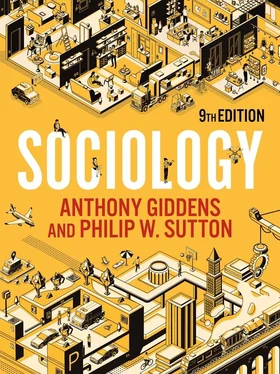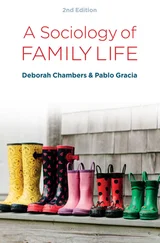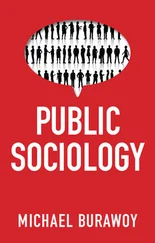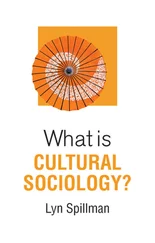
In fieldwork, researchers have to get close to the communities they are studying, but not so close that they lose their relatively detached sociological eye.
There are other types of sampling used by sociologists. In some types of research, it may be necessary to use convenience sampling. This means taking your sample from wherever you can! Because convenience sampling is less systematic and rigorous than other types, the results it generates have to be treated with caution. Nonetheless, in applied research or studies of hard-to-reach social groups who may be reluctant to come forward – for example, substance users or people who self-harm – it may be the only practical way of gathering an adequate sample. Without convenience sampling, the voices of some social groups may just not get heard. Similarly, snowball sampling, in which existing participants are used to recruit other participants via their own network of contacts and friends, is a tried and tested method of gaining access to a larger sample than would otherwise be possible.
Advantages and disadvantages of surveys
There are several reasons why surveys are used in sociology. Responses to questionnaires can more easily be quantified and analysed than material generated by most other research methods. Large numbers of people can be studied and, given sufficient funds, researchers can employ an agency specializing in survey work to collect the responses. This kind of research is a model of quantitative research, as surveys give researchers a statistical measure of the phenomenon they are studying.
Many sociologists today, however, are critical of the survey method. They argue that an appearance of precision can be given to findings whose accuracy may be dubious, given the relatively shallow nature of most survey responses. Levels of non-response can be high, especially when questionnaires are sent and returned through the mail, which can compromise the survey’s representativeness. It is not uncommon for studies to be published based on results derived from little over half of those in the sample, although efforts are usually made to re-contact non-respondents or to substitute them with other people. Little is known about those who choose not to respond to surveys or refuse to be interviewed, though survey research is often experienced as intrusive and timeconsuming. Despite these problems, the social survey remains one important method in the sociologist’s armoury.
The questionnaire – standardized or open-ended?
Three types of questionnaire are used in surveys. Some contain a standardized, or fixed-choice, set of questions, to which only a given range of responses is possible – for instance, ‘ Yes/No/Don’t know ’ or ‘ Very likely/Likely/Unlikely/Very unlikely ’. Standardized questionnaires have the advantage that responses are easy to count and compare, since only a small number of categories is involved. On the other hand, because they do not allow for subtleties of opinion or verbal expression, the information they yield is likely to be restricted in scope and can sometimes be misleading.
Other questionnaires are open-ended, giving respondents more opportunity to express their views in their own words rather than limiting them to fixed-choice responses. Open-ended questionnaires typically provide more detailed information than standardized ones. On the other hand, the lack of standardization means that responses are likely to be more difficult to compare statistically, and this limits attempts to draw general conclusions from the study.
Questionnaire items are normally listed so that a team of interviewers can ask the questions and record responses in the same predetermined order, and all the items must be readily understandable to interviewers and interviewees alike. In the large national surveys undertaken regularly by government agencies and private research organizations, interviews are carried out more or less simultaneously across the whole country. Those who conduct the interviews and those who analyse the results could not do their work effectively if they constantly had to check with each other about ambiguities in the questions or answers.
Questionnaires should also take into consideration the characteristics of respondents. Will they see the point the researcher has in mind in asking a particular question? Have they enough information to provide an answer? Will they be able to answer at all? The terms and concepts used in a questionnaire might be unfamiliar to the respondents. For instance, the question ‘What is your marital status?’ might baffle some people, and it would be more appropriate to ask, ‘Are you single, married, separated, or divorced?’ Most surveys are preceded by pilot studies in which just a few people complete a questionnaire in order to pick up such ambiguities and iron out problems that may not be anticipated by the investigator before the main survey is carried out.
An experiment is an attempt to test a hypothesis under highly controlled conditions established by the investigator. Experiments are commonplace in the natural sciences and psychology, as they offer major advantages over other research procedures. In an experimental situation the researcher directly controls the circumstances under study. Psychologists examining individual behaviour use laboratorybased experimentation extensively. However, in comparison with these disciplines, the scope for experimentation in sociology is severely restricted. Most sociological studies, even those of individual actions, look to investigate the relationship between micro- and macrosocial phenomena. To remove individuals from their social context for the purposes of experimentation would make little, if any, sense to many researchers.
Yet, sometimes sociologists want to explore group dynamics – the way individuals behave when in groups – and experiments may then be feasible. Even so, only small groups can be brought into a laboratory setting, and in such experiments people know they are being studied and may behave differently. Such changes in the behaviour of research subjects are referred to as the ‘Hawthorne effect’. In the 1930s, researchers conducting productivity studies at the Western Electric Company’s Hawthorne plant near Chicago found to their surprise that worker productivity continued to rise regardless of which experimental conditions they imposed (levels of lighting, break patterns, work team size, and so on). Workers were conscious of being under scrutiny and accelerated their normal work pace, thereby undermining the experiments. Nevertheless, as ‘Classic studies’ 2.1 shows, it is possible to learn things about social life from small-scale experiments in social psychology.
In contrast to experiments, biographical research belongs purely to the social sciences and has no place in the natural sciences. Biographical research has become increasingly popular in sociology over recent decades and includes oral histories, narratives, autobiographies, biographies and life histories (Bryman 2015). These methods are used to explore how individuals experience social life and periods of social change and how they interpret their relationships with others in the context of a changing world. In this way, biographical methods allow new voices to enter sociological research, and life histories are a good example.
Life histories consist of biographical material assembled about particular individuals, usually as recalled by the individuals themselves. Life histories have been successfully employed in sociological studies of major importance. One celebrated early study was The Polish Peasant in Europe and America , by W. I. Thomas and Florian Znaniecki, the five volumes of which were published between 1918 and 1920 (Thomas and Znaniecki 1966). Thomas and Znaniecki were able to provide a more sensitive and subtle account of the experience of migration than would have been possible without the interviews, letters and newspaper articles they collected. Biographical research aims to give us a feel for how life is experienced, something that can never be achieved by large-scale surveys and statistical testing. Other methods do not usually yield as much information about the development of beliefs and attitudes over time. Life-history studies rarely rely wholly on people’s memories. Normally, other sources such as letters, contemporary reports and newspaper descriptions are used to expand on and check the validity of the information that individuals provide.
Читать дальше













